-
 Bitcoin
Bitcoin $107,631.9817
-1.73% -
 Ethereum
Ethereum $2,739.1787
-4.61% -
 Tether USDt
Tether USDt $1.0000
-0.01% -
 XRP
XRP $2.2427
-3.30% -
 BNB
BNB $664.0527
-0.73% -
 Solana
Solana $158.0902
-5.38% -
 USDC
USDC $0.9998
-0.01% -
 Dogecoin
Dogecoin $0.1876
-7.78% -
 TRON
TRON $0.2753
-3.21% -
 Cardano
Cardano $0.6820
-5.55% -
 Hyperliquid
Hyperliquid $43.0171
-0.38% -
 Sui
Sui $3.3308
-4.87% -
 Chainlink
Chainlink $14.3431
-7.89% -
 Avalanche
Avalanche $21.0266
-6.48% -
 Bitcoin Cash
Bitcoin Cash $437.7657
-1.56% -
 Stellar
Stellar $0.2746
-2.52% -
 UNUS SED LEO
UNUS SED LEO $8.8665
-1.96% -
 Toncoin
Toncoin $3.1885
-3.37% -
 Shiba Inu
Shiba Inu $0.0...01260
-6.84% -
 Hedera
Hedera $0.1686
-4.93% -
 Litecoin
Litecoin $88.8406
-5.16% -
 Polkadot
Polkadot $4.0542
-6.28% -
 Monero
Monero $322.5806
-4.20% -
 Ethena USDe
Ethena USDe $1.0004
-0.02% -
 Bitget Token
Bitget Token $4.7089
-3.10% -
 Dai
Dai $0.9998
-0.01% -
 Pepe
Pepe $0.0...01206
-9.06% -
 Uniswap
Uniswap $7.8694
-5.20% -
 Pi
Pi $0.6232
-2.68% -
 Aave
Aave $301.3815
-3.83%
How to interpret the divergence between VWAP and trading volume? Will the subsequent trend reverse?
Traders should monitor VWAP and volume divergence in cryptocurrencies to anticipate trend reversals, using additional indicators for confirmation before executing trades.
Jun 10, 2025 at 11:00 am
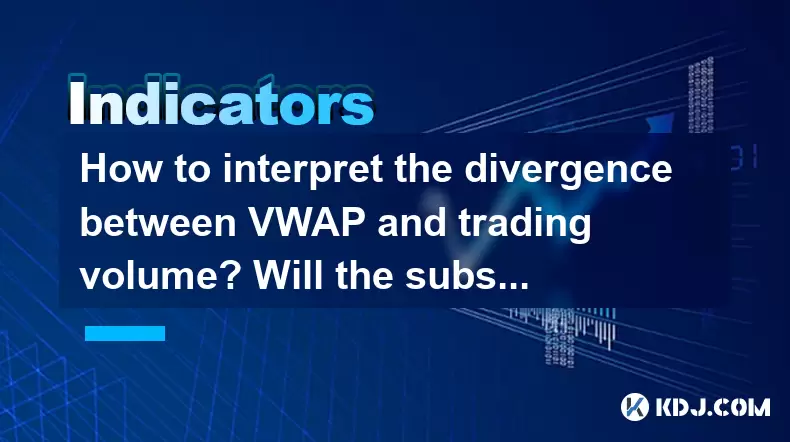
Understanding the divergence between the Volume Weighted Average Price (VWAP) and trading volume is crucial for traders looking to make informed decisions in the cryptocurrency market. VWAP is an important technical indicator that provides the average price of a cryptocurrency weighted by volume, helping traders to gauge the overall market sentiment. On the other hand, trading volume represents the total number of shares or contracts traded within a specified time frame, which can indicate the strength or weakness of a price move. When these two indicators diverge, it can signal potential changes in market dynamics.
What is VWAP and How is it Calculated?
VWAP is calculated by taking the total dollar value of all trading periods divided by the total trading volume for the same timeframe. The formula for VWAP is:
[ \text{VWAP} = \frac{\sum(P_i \times V_i)}{\sum V_i} ]
Where:
- ( P_i ) is the price of the trade
- ( V_i ) is the volume of the trade
This indicator is typically used over a single trading day but can be adjusted for different time frames. VWAP helps traders identify the average price at which the asset was traded, providing a benchmark against which the current price can be compared.
Understanding Trading Volume
Trading volume is the total number of shares or contracts traded for a given security or market during a specified period. In the context of cryptocurrencies, it represents the total number of coins traded within a specific timeframe. High trading volume often indicates strong interest in the asset and can be a sign of a robust market trend, while low volume may suggest a lack of interest or a weak trend.
Divergence Between VWAP and Trading Volume
When the VWAP and trading volume diverge, it means that the average price at which the asset is being traded does not align with the total volume of trades. This divergence can be a critical signal for traders. For instance, if the VWAP is rising while the trading volume is declining, it may indicate that fewer traders are willing to buy at higher prices, suggesting a potential reversal. Conversely, if the VWAP is falling but the trading volume is increasing, it might suggest that more traders are selling at lower prices, potentially signaling a bearish trend.
Analyzing the Impact on Subsequent Trends
The divergence between VWAP and trading volume can provide insights into potential trend reversals. If the VWAP is significantly above the current price and the trading volume is decreasing, it might indicate that the bullish trend is losing steam, and a reversal could be imminent. Similarly, if the VWAP is below the current price and the trading volume is increasing, it could suggest that the bearish trend is strengthening, and a continued downward move is likely.
To interpret these signals accurately, traders should consider other technical indicators and market conditions. For example, if the divergence coincides with overbought or oversold conditions indicated by the Relative Strength Index (RSI) or other momentum indicators, the likelihood of a trend reversal increases.
Practical Application in Cryptocurrency Trading
In the context of cryptocurrency trading, understanding the divergence between VWAP and trading volume can be particularly useful. Here's how you can apply this knowledge:
- Monitor VWAP and Volume: Use trading platforms that provide real-time data on VWAP and trading volume. Many cryptocurrency exchanges offer these indicators on their charting tools.
- Identify Divergence: Look for instances where the VWAP and trading volume are moving in opposite directions. This can be done by comparing the trends over a specified period.
- Confirm with Other Indicators: Use additional technical indicators like the Moving Average Convergence Divergence (MACD), RSI, or Bollinger Bands to confirm the potential trend reversal signaled by the divergence.
- Execute Trades: Based on the confirmed signals, decide whether to enter or exit trades. For example, if the VWAP is rising but the volume is falling, consider taking profits or entering a short position if other indicators support a bearish reversal.
Case Study: Bitcoin (BTC) and VWAP Divergence
Let's consider a hypothetical case study involving Bitcoin (BTC). Suppose the VWAP for BTC over the last 24 hours is steadily increasing, but the trading volume is declining. This scenario could suggest that the bullish trend is weakening. Here's how a trader might analyze and act on this information:
- Analysis: The trader notices that the VWAP is above the current market price, indicating that BTC has been trading at higher prices on average. However, the declining volume suggests fewer traders are willing to buy at these higher prices.
- Confirmation: The trader checks the RSI and finds it in overbought territory, supporting the potential for a bearish reversal.
- Action: Based on this analysis, the trader decides to sell their BTC holdings or enter a short position, anticipating a price decline.
Using VWAP and Volume Divergence in Different Time Frames
The divergence between VWAP and trading volume can be analyzed across various time frames, from intraday to weekly or monthly charts. Each time frame can provide different insights:
- Intraday: Useful for day traders looking to capitalize on short-term price movements. Divergence on a 15-minute or 1-hour chart can signal potential entry or exit points within the trading day.
- Daily: Suitable for swing traders who hold positions for several days to weeks. Divergence on a daily chart can indicate longer-term trend changes.
- Weekly/Monthly: Helpful for position traders or investors looking at longer-term trends. Divergence on these time frames can signal significant market shifts.
FAQs
Q1: Can VWAP be used effectively on all cryptocurrencies, or is it better suited for more liquid assets?
A1: VWAP is most effective for more liquid cryptocurrencies where there is sufficient trading volume to provide accurate data. For less liquid assets, the VWAP may not be as reliable due to the potential for large price swings with smaller volumes.
Q2: How can traders use VWAP divergence to set stop-loss orders?
A2: Traders can use VWAP divergence to set stop-loss orders by placing them just below the VWAP line if they are in a long position, or above the VWAP line if they are in a short position. This strategy helps to protect against potential trend reversals indicated by the divergence.
Q3: Is it necessary to use additional indicators alongside VWAP and volume to confirm divergence signals?
A3: Yes, using additional indicators such as RSI, MACD, or Bollinger Bands can help confirm the signals provided by the divergence between VWAP and trading volume. These indicators can provide a more comprehensive view of market conditions and increase the reliability of trading decisions.
Q4: How can traders differentiate between a temporary divergence and a significant trend reversal?
A4: To differentiate between a temporary divergence and a significant trend reversal, traders should look at the duration and magnitude of the divergence. A longer-lasting and more pronounced divergence, especially when confirmed by other technical indicators, is more likely to signal a significant trend reversal. Additionally, monitoring market news and events can help determine whether the divergence is due to temporary factors or more fundamental shifts in market sentiment.
Disclaimer:info@kdj.com
The information provided is not trading advice. kdj.com does not assume any responsibility for any investments made based on the information provided in this article. Cryptocurrencies are highly volatile and it is highly recommended that you invest with caution after thorough research!
If you believe that the content used on this website infringes your copyright, please contact us immediately (info@kdj.com) and we will delete it promptly.
- The Bitcoin Treasury Strategy That's Reanimating Zombie Companies
- 2025-06-13 03:00:12
- BlockDAG (BDAG) Could Be the Next Biggest Altcoin as NBA Courtside Exposure Teases a Possible 2x Rally
- 2025-06-13 03:00:12
- Tether (USDT) Buys 32% Stake in Canada's Public Gold Royalty Firm Elemental Altus Royalties
- 2025-06-13 02:55:12
- Troller Cat Surges Past $225K in Presale as Dogwifhat Dips and FLOKI Gains
- 2025-06-13 02:55:12
- The graph (GRT), a key player in blockchain data indexing, has not seen a price pump yet.
- 2025-06-13 02:50:13
- Is This the Season Where Meme Coins Rewrite Crypto History Again?
- 2025-06-13 02:50:13
Related knowledge
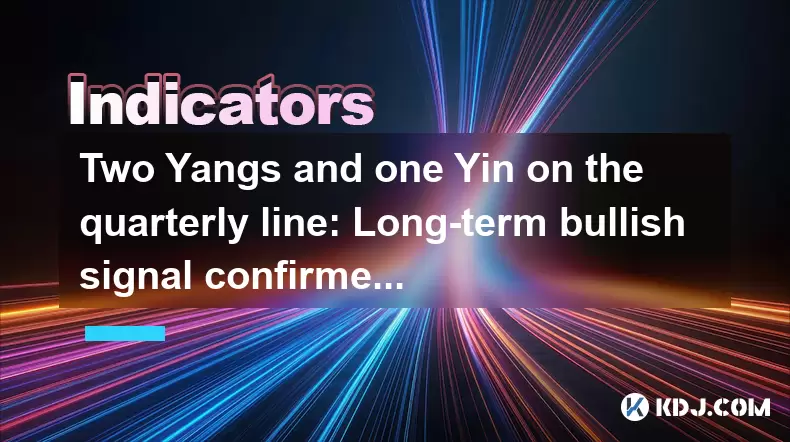
Two Yangs and one Yin on the quarterly line: Long-term bullish signal confirmed?
Jun 12,2025 at 07:00am
Understanding the 'Two Yangs and One Yin' Candlestick PatternIn technical analysis, candlestick patterns play a pivotal role in identifying potential market reversals or continuations. The 'Two Yangs and One Yin' pattern is one such formation that traders often observe on longer timeframes like the quarterly chart. This pattern consists of two bullish (...
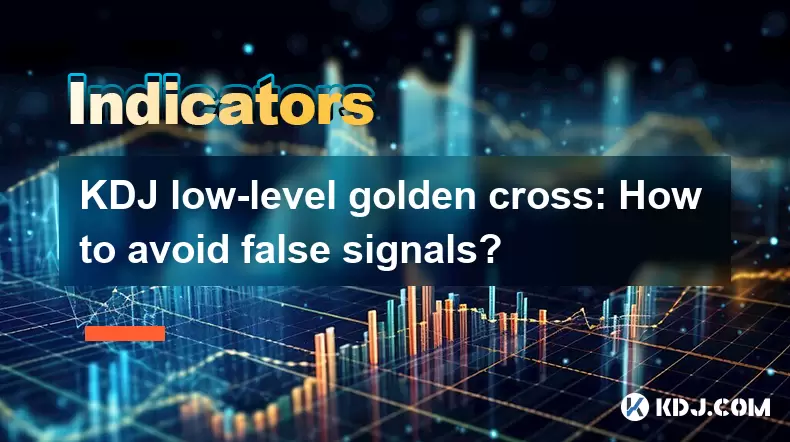
KDJ low-level golden cross: How to avoid false signals?
Jun 12,2025 at 08:21am
Understanding the KDJ IndicatorThe KDJ indicator, also known as the stochastic oscillator, is a momentum-based technical analysis tool widely used in cryptocurrency trading. It consists of three lines: the %K line (fast stochastic), the %D line (slow stochastic), and the %J line (divergence value). These lines oscillate between 0 and 100, helping trader...

Bottom-up volume stagnation: Is it accumulation or heavy selling pressure?
Jun 12,2025 at 01:42pm
What Is Bottom-Up Volume Stagnation?Bottom-up volume stagnation refers to a specific pattern observed in cryptocurrency trading charts where the price of an asset moves sideways or slightly downward, and trading volume remains consistently low over an extended period. This phenomenon is often seen after a sharp price drop or during a prolonged bear mark...
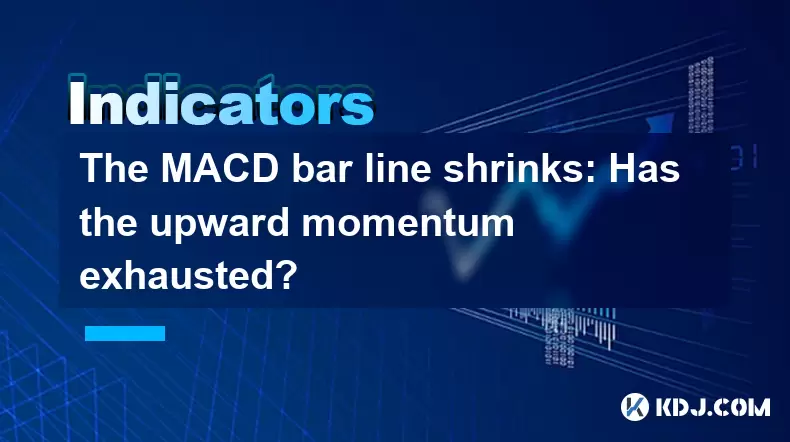
The MACD bar line shrinks: Has the upward momentum exhausted?
Jun 12,2025 at 12:49am
Understanding the MACD Bar LineThe Moving Average Convergence Divergence (MACD) is a widely used technical indicator in cryptocurrency trading. It consists of three main components: the MACD line, the signal line, and the MACD histogram (also known as the bar line). The MACD bar line represents the difference between the MACD line and the signal line. W...

The chip peak moves up: Is the main force quietly shipping?
Jun 12,2025 at 01:01am
Understanding the Chip Peak Movement in Cryptocurrency MiningIn recent years, the chip peak movement has become a critical topic within the cryptocurrency mining community. This phrase typically refers to the point at which mining hardware reaches its maximum efficiency and output capacity. When this peak shifts upward, it often signals changes in the s...
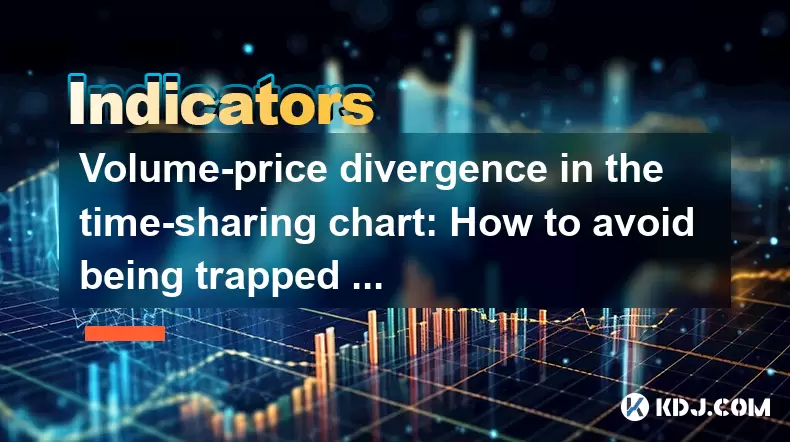
Volume-price divergence in the time-sharing chart: How to avoid being trapped on the same day?
Jun 12,2025 at 07:28pm
Understanding Volume-Price Divergence in Cryptocurrency TradingVolume-price divergence is a critical concept in technical analysis, especially within the fast-moving world of cryptocurrency trading. It refers to a situation where price movement and trading volume move in opposite directions. For instance, if the price of a cryptocurrency is rising while...

Two Yangs and one Yin on the quarterly line: Long-term bullish signal confirmed?
Jun 12,2025 at 07:00am
Understanding the 'Two Yangs and One Yin' Candlestick PatternIn technical analysis, candlestick patterns play a pivotal role in identifying potential market reversals or continuations. The 'Two Yangs and One Yin' pattern is one such formation that traders often observe on longer timeframes like the quarterly chart. This pattern consists of two bullish (...

KDJ low-level golden cross: How to avoid false signals?
Jun 12,2025 at 08:21am
Understanding the KDJ IndicatorThe KDJ indicator, also known as the stochastic oscillator, is a momentum-based technical analysis tool widely used in cryptocurrency trading. It consists of three lines: the %K line (fast stochastic), the %D line (slow stochastic), and the %J line (divergence value). These lines oscillate between 0 and 100, helping trader...

Bottom-up volume stagnation: Is it accumulation or heavy selling pressure?
Jun 12,2025 at 01:42pm
What Is Bottom-Up Volume Stagnation?Bottom-up volume stagnation refers to a specific pattern observed in cryptocurrency trading charts where the price of an asset moves sideways or slightly downward, and trading volume remains consistently low over an extended period. This phenomenon is often seen after a sharp price drop or during a prolonged bear mark...

The MACD bar line shrinks: Has the upward momentum exhausted?
Jun 12,2025 at 12:49am
Understanding the MACD Bar LineThe Moving Average Convergence Divergence (MACD) is a widely used technical indicator in cryptocurrency trading. It consists of three main components: the MACD line, the signal line, and the MACD histogram (also known as the bar line). The MACD bar line represents the difference between the MACD line and the signal line. W...

The chip peak moves up: Is the main force quietly shipping?
Jun 12,2025 at 01:01am
Understanding the Chip Peak Movement in Cryptocurrency MiningIn recent years, the chip peak movement has become a critical topic within the cryptocurrency mining community. This phrase typically refers to the point at which mining hardware reaches its maximum efficiency and output capacity. When this peak shifts upward, it often signals changes in the s...

Volume-price divergence in the time-sharing chart: How to avoid being trapped on the same day?
Jun 12,2025 at 07:28pm
Understanding Volume-Price Divergence in Cryptocurrency TradingVolume-price divergence is a critical concept in technical analysis, especially within the fast-moving world of cryptocurrency trading. It refers to a situation where price movement and trading volume move in opposite directions. For instance, if the price of a cryptocurrency is rising while...
See all articles

























































































